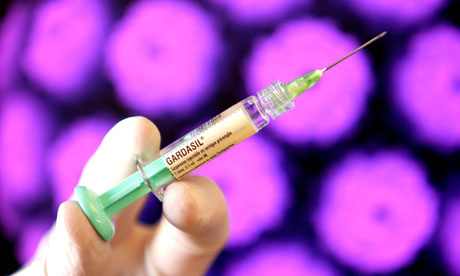
US health officials said on Wednesday that the prevalence of HPV has decreased by 56% among teenagers, since a vaccination for the disease was introduced in 2006.
Human papillomavirus, the most common sexually transmitted disease in the country, infects approximately 79 million US residents, according to the Center for Disease Control. "This report shows that HPV vaccine works well, and the report should be a wake-up call to our nation to protect the next generation by increasing HPV vaccination rates," CDC director Tom Frieden said in a statement.
Samples from more than 8,000 females between 14 and 59 years of age were collected by government workers and examined by the CDC. The agency then compared the proportion of females infected in the three-year period before the program was started (2003 to 2006) to the proportion infected in the three-year period after the vaccine was introduced. For girls aged 14 to 19, infections from the cancer-causing strains of HPV dropped from 7.2% in 2006 to 3.6% in 2010.
"The decline in vaccine type prevalence is higher than expected and could be due to factors such as to herd immunity, high effectiveness with less than a complete three-dose series and/or changes in sexual behavior we could not measure," said Dr Lauri Markowitz, the lead author of the study. "This decline is encouraging, given the substantial health and economic burden of HPV-associated disease."
The CDC recommends that males and females should get the vaccination around age 11 or 12. Yet, only a third of women aged 13 to 17 have received the full three shot vaccination series.
Frieden warned that the low vaccination rate means that 50,000 women alive today will suffer from cervical cancer in their lifetime. CDC data shows that each year, about 27,000 cancers caused by HPV occur in women and men in the United States.
Yale Cancer Center researchers said this month that there are stark economic and racial discrepancies of HPV vaccine awareness in the US. Women – especially those who are white, college-educated and have private medical insurance – are more likely to know about the vaccine.
When the vaccine was introduced, some groups claimed it would encourage promiscuity in young adults. A number of studies show that this fear is groundless.

